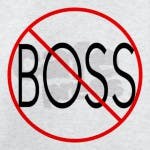Valve, the software giant responsible for hit video game franchises like Portal and Half-Life, has made headlines in the past for its “flat hierarchy,” which is a fancy way of saying Valve employees have no bosses, sit wherever they want, and decide salaries together.
Sound crazy? Valve isn’t alone.
Online retailer Zappos has promised to flatten their hierarchy by the end of 2014 with something they call a “Holacracy,” which is another fancy buzzword that means essentially the same thing: everyone manages themselves. W.L. Gore, an enterprise technology company, is infamous for its flat hierarchy and their democratic CEO election process.
In fact, shortening, flattening, or getting rid of hierarchies altogether is a hot trend among Fortune 100 companies — but why?
“I think the fact that we’re not managed by people and we’re not managing people and you’re able to formulate your own ideas and work with whoever it is to come up with a project or feature – that’s empowering,” said DJ Powers, Valve employee, in a BBC interview, “It’s a community of respect and the best idea wins no matter who it comes from, whether they’ve been at Valve for a year or founded Valve.”
To manage or not to manage
Indeed, a study from Texas A&M’s Mays Business School cited in the interview showed that factory workers who were left to manage themselves were actually more productive than teams who had to report to a manager.
Dr. Debra France from Great Place to Work says she fully endorses W.L. Gore’s democratic model, insisting it increases shared accountability and decision-making, builds trust by eliminating micromanagement, and frees employees up to be more creative and collaborative. Valve employees would concur and submit their astronomical sales figures from the last decade as proof.
However, an absence of hierarchy doesn’t mean that a hierarchy isn’t still there.
Creatures of habit
At Valve, even though founder Gabe Newell created the company with a flat hierarchy from the get-go, there is still an entry in the employee handbook stating, “Of all the people at this company who aren’t your boss, Gabe is the MOST not your boss, if you get what we’re saying.”
In a recent New York Times article, a study from York University suggested that hierarchies are a “form of structure that we embrace for comfort in a chaotic world.” They used Google as an example, who experimented with a flat hierarchy back in 2002 but eventually went back. “We realized managers actually serve a purpose, resolving conflicts, answering questions,” said a representative from the company.
So what’s the verdict? Do we need hierarchies or not?
Like anything else, it’s all relative.
It’s your thing
In general, start-ups and smaller tech companies with niche cultures tend to thrive under the flat model, and larger companies that try to retrofit it aren’t very compatible. The only dependable barometer for success is if the employees are engaged in their work, have a supportive culture, and are surrounded by inspiring leaders.
Hierarchies or not, you can take that all the way to the bank.
This was originally published on the Michael C. Fina blog.
